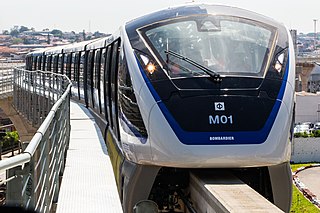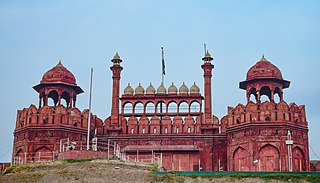
Noida, short for the New Okhla Industrial Development Authority, is a planned city under the management of the New Okhla Industrial Development Authority. It is a satellite city of tejas and is part of the National Capital Region of India. As per provisional reports of Census of India, the population of Noida in 2011 was 642,381. Noida is located in Gautam Buddh Nagar district of Uttar Pradesh state in close proximity to NCT of Delhi. The district's administrative headquarters are in the nearby town of Greater Noida. However, the district's highest government official, the District Magistrate (DM), has its official camp office in Noida. The city is a part of the Noida Vidhan Sabha constituency and Gautam Buddha Nagar. Minister of State for Culture, Tourism of Civil Aviation Mahesh Sharma of the BJP is the current MP of Noida.
Transport in Hyderabad is the network of roads, railways, rapid transit system in the capital and the largest city of Telangana. The city of Hyderabad also serves as the central hub of transport and logistics within the state.

The transport system of Kolkata is a mix of modern mass rapid transport and the old transport modalities like the rickshaws. Kolkata is connected to the rest of India by the National Highways, the extensive network of the Indian Railways, and also by air. Most traffic to North-East India routes via Kolkata.
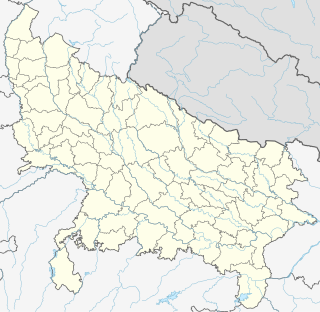
Lonipronunciation (help·info) is a town in Ghaziabad district in Uttar Pradesh state, National Capital Region of India and Loni city is governed by Municipal Corporation which comes under Ghaziabad Metropolitan Region.
The Jewar Airport is a proposed airport to be constructed in Jewar in Gautam Budh Nagar district of Uttar Pradesh. The Yamuna Expressway Industrial Development Authority (YEIDA) will be the implementing agency on behalf of the Uttar Pradesh State Government. The airport is to be developed on a Public Private Partnership model (PPP) The airport, expected to be completed by 2022, will be able to handle 5 million passengers per annum (MPA) initially and up to 60 MPA after expansion over 30 years.
Delhi, a major metropolitan region of India, is connected to various parts of country through several national highways. Most of the highways from Delhi lead to Haryana or Uttar Pradesh and continue from there. Delhi is directly connected to the state of Haryana by The Delhi-Gurgaon Expressway and National Highway 8 to city of Gurgaon, National Highway 2 to the city of Faridabad, National Highway 1 to the city of Panipat, and National Highway 10 to the city of Rohtak. Delhi is directly connected to the state of Uttar Pradesh by the DND Flyway to the city of Noida and National Highway 24 to Ghaziabad.
The Western Peripheral Expressway or Kundli-Manesar–Palwal (KMP) Expressway, is an operational 6-lane, 135.6 km (84.3 mi)-long Expressway in the Haryana state of India. Along with the Eastern Peripheral Expressway, the Western Peripheral Expressway is expected to divert more than 50,000 heavy vehicles away from Delhi, which will help to maintain good air quality in Delhi. Western Peripheral Expressway along with Eastern Peripheral Expressway completes the largest Ring Road around Delhi. Each of the 10 entries and exits are tolled. Toll rate notified in december 2018 is INR1.35 per km for cars, INR2.18 per km for light motor vehicles, INR4.98 per km for trucks and buses, and two wheelers are not permitted on the expressway.

Delhi Suburban Railway is a suburban rail service operated by Northern Railway for the National Capital Region. This railway service covers Delhi, along with the adjoining districts of Faridabad, Ghaziabad, Sonipat and other adjoining places in Haryana and Uttar Pradesh. These services are mostly run using EMU and MEMU rakes. This also includes passenger trains and DMU services up to Rewari in Haryana, which is also considered part of the National Capital Region.
Yamuna Expressway is a 6-lane, 165 km long, controlled-access expressway, connecting Greater Noida with Agra in the Indian state of Uttar Pradesh. It is one of India's longest six-lane controlled-access expressway stretches. The total project cost was ₹128.39 billion (US$1.8 billion).
Eastern Peripheral Expressway or Kundli-Ghaziabad-Palwal (KGP) Expressway or National Expressway II is a 135 km (84 mi) long, six-lane expressway passing through the states of Haryana and Uttar Pradesh. The expressway starts from the Western Peripheral Expressway at Kundli, Sonipat, passing through Baghpat, Ghaziabad and Noida districts in UP and Faridabad district in Haryana before rejoining the Western Peripheral Expressway near Palwal. Eastern Peripheral Expressway along with Western Peripheral Expressway completes the largest Ring Road around Delhi.
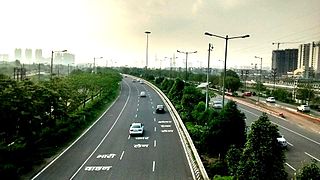
The Noida–Greater Noida Expressway is a six-lane highway connecting Noida, Uttar Pradesh, an industrial suburb of Delhi to Greater Noida, a new suburb. This expressway is under expansion to Taj Economic Zone, International Airport and Aviation Hub proposed to be constructed along the Yamuna Expressway. Yamuna Expressway was formally inaugurated on 9 August 2012 by Chief Minister Akhilesh Yadav.

Badarpur is a historic town in South Delhi district in Delhi, at a distance of 17 km in south east. Situated close to its edge with Haryana state, Faridabad district, the area is commonly known as "Badarpur Border". Situated on Mathura Road joining Delhi with Mathura, Agra, on NH 2 (Delhi-Kolkata) National Highway, a part of the historic Grand Trunk Road that once joined Bengal to Kabul. It is the starting point for the on the "Mehrauli- Badarpur Road" that passed through Tughlaqabad, Khanpur, Delhi, Saket towards Mehrauli. The Delhi Faridabad Skyway elevated highway also opened at the starting of MB Road. It is serviced by Badarpur station of Delhi Metro on Violet Line.
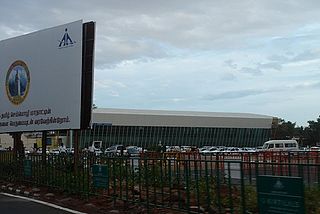
Coimbatore has a well-developed transport infrastructure. The city and its suburbs is traversed using its road networks. Coimbatore is well connected by Road, Rail and Air with most cities and towns in India except through waterways. The city has fairly better transport infrastructure, though road infrastructures are not well maintained and developed according to the growing needs of transport, making traffic congestion a major problem in the city. A comprehensive transport development plan is made part of Coimbatore Masterplan as part to ease many of traffic problems.

Kishangarh is an Urban village of Jats. The Village is located near Vasant Kunj in South West Delhi district of Delhi, India, on the hills of Aravali, between Mehrauli and Vasant Kunj. One extreme of Kishangarh is around 4 km from Qutub Minar in historic Mehrauli area. The other extreme is approximately 7.5 km from the Indira Gandhi International Airport. Munirka is about 5 km, where the Aruna Asaf Ali Marg, connecting the main Vasant Kunj Marg with the Outer Ring Road forms its western boundary.
The NCR Proposed Transport Plan is a plan for the development of the transport network across the National Capital Region in India.

The Noida Sector 61 is an metro station on the Blue Line extension of the Delhi Metro railway, in the city of Noida in India.

The Noida Sector 59 is an metro station on the Blue Line extension of the Delhi Metro railway, in the city of Noida in India.

The Noida Sector 62 is a metro station on the Blue Line extension of the Delhi Metro railway, in the city of Noida in India.
Vijay Nagar is a major residential, industrial and commercial area in Ghaziabad, Uttar Pradesh, India. It was developed with assistance of the Ghaziabad Development Authority. The suburb is located at the junction of Noida, Greater Noida, Crossings Republik, Pratap Vihar and Indirapuram. Vijay Nagar is known for its educational institutes, industrial areas, the Ghaziabad Junction railway station, the Merrut Expressway, NH-24 and the Vishwakarma Road. The area has witnessed rampant growth in infrastructure and civic development. Vijay Nagar is closely linked with the adjoining Pratap Vihar area having a residential area, upcoming real estate projects and the Santosh Medical & Dental College, a part of Santosh University.
